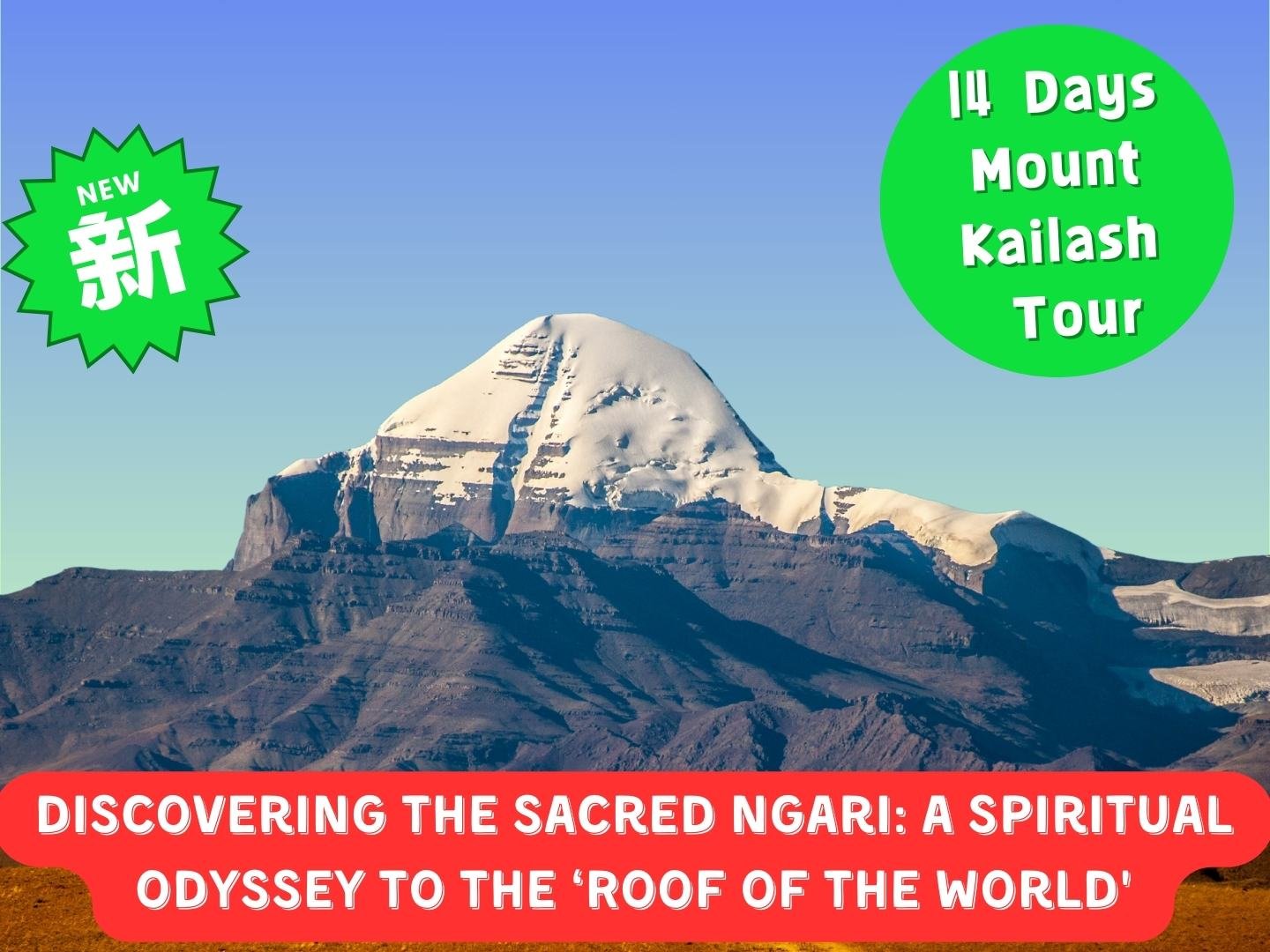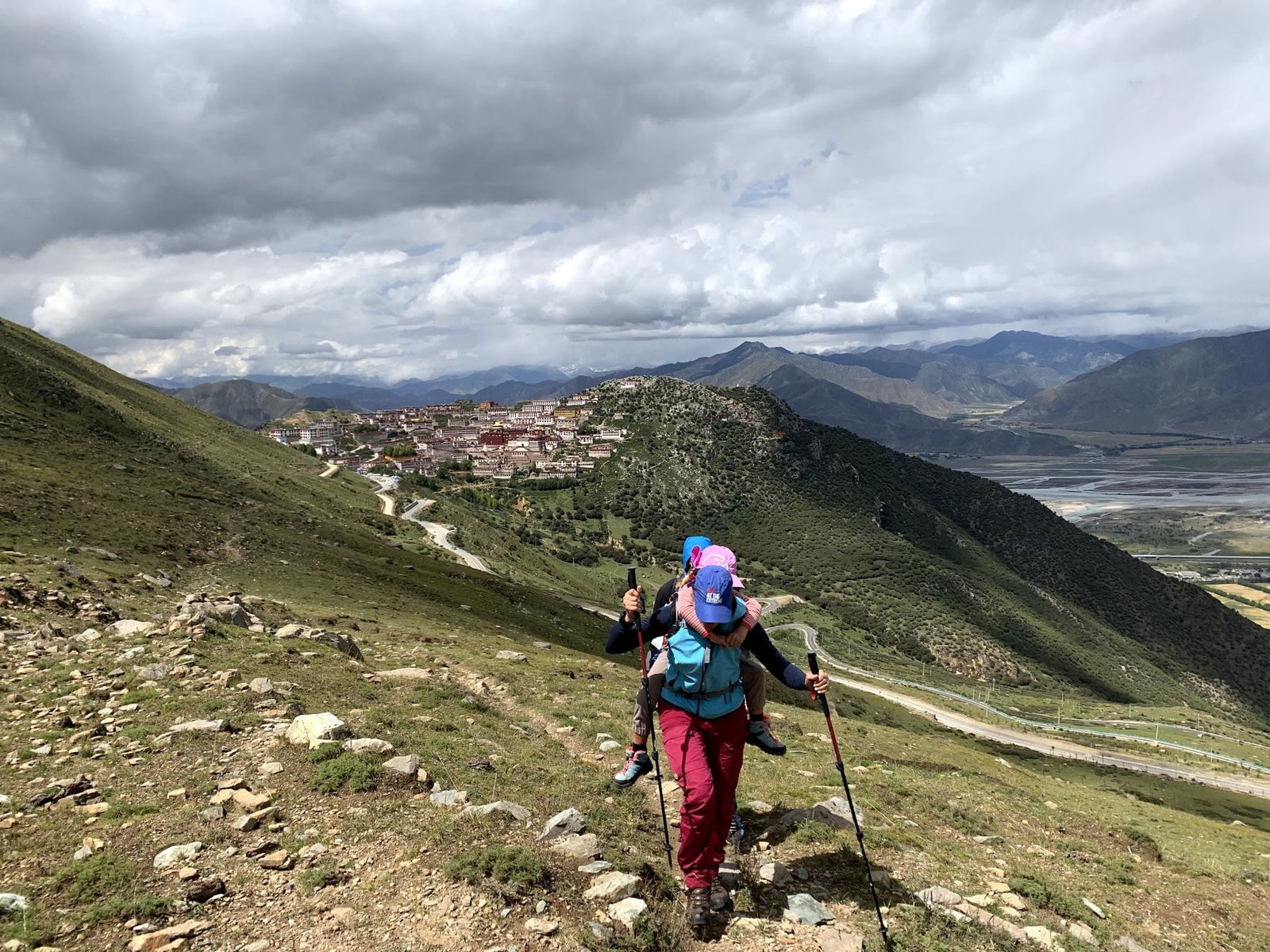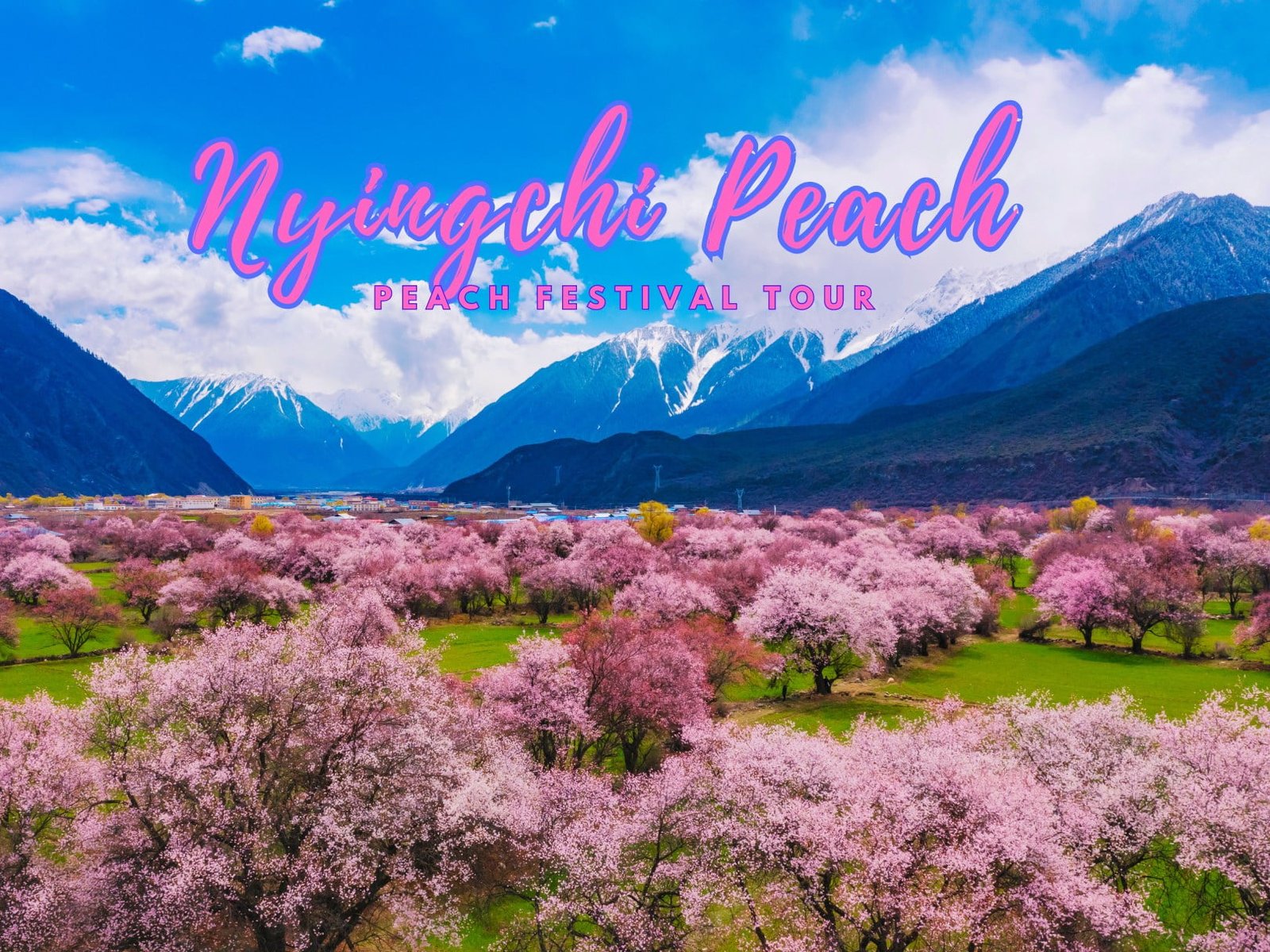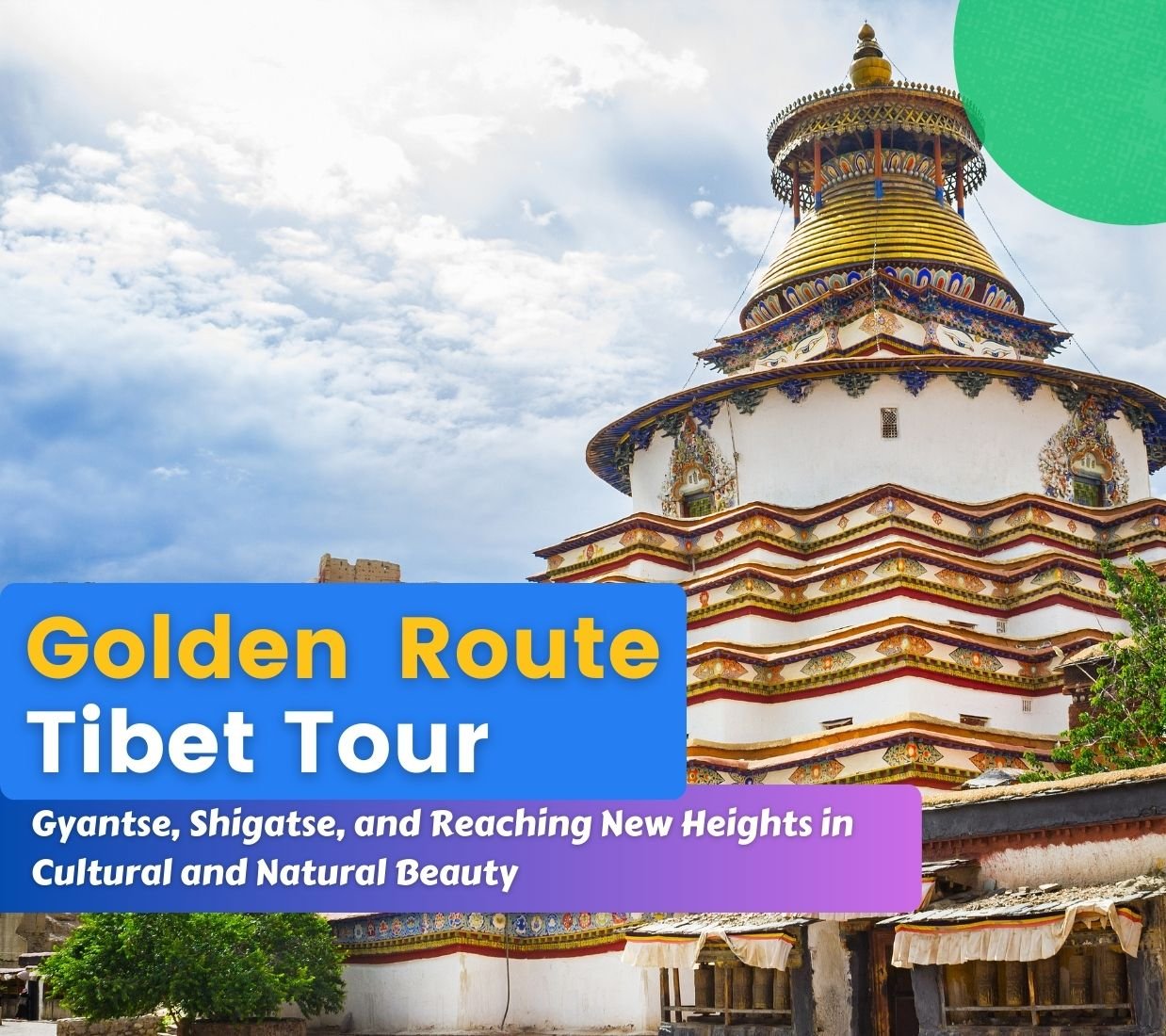The most picturesque time in Tibet.
Tibet is stunning in both summer and autumn. In summer, it is pristine and sunny, occasionally interrupted by sudden rain. However, the rainy weather does not detract from Tibet’s beauty. The summer season in Tibet is synonymous with vitality, as all living things flourish amidst lush forests, grasslands, and vibrant trees. The sky is a clear blue adorned with soft clouds. In autumn, Tibet transforms into a paradise resembling a fairy tale world. The landscape bursts with an array of stunning and vibrant colours, creating an unparalleled scenic view.
Recommended summer landscapes: the cultural landscapes in Lhasa, the natural scenery in Nyingchi, and the attractions in Shannan are all worth visiting.
Recommended autumn landscapes: the cultural landscape of Lhasa, the natural beauty of Nyingchi, Namtso, and the Holy Elephant Door, scenic spots in the southern mountains, the Mount Everest base camp, and Ngari South and Great North Lines.
When travelling to Tibet, you can explore the surrounding areas starting from Lhasa. Nyingchi is situated to the east and can be reached through a travel route from Lhasa. Shigatse and Ngari are located to the west. If you visit Ngari in autumn, you can also explore the scenic spots of Shigatse. Nagqu is to the north of Ngari and is mainly known for Namtso and Sacred Elephant Door. Shannan is to the south of Lhasa and its main attraction is Yamdrok Yongcuo. However, there are also other notable attractions along the tour route from Lhasa to Shannan.
The costliest tourist season in Tibet.
The tourist season in Tibet is divided into two main periods: peak season and off-season. However, it can also be further categorized into three seasons: peak season, flat season, and off-season.
Peak tourist season in Tibet, occurring from late June to early September and during the National Day holiday, experiences a high influx of visitors. Consequently, prices see a significant increase of around 30% to 40%. Moreover, ticket availability and reservations for scenic spots are limited, and their prices are considerably higher than usual. July and August, as well as a few days during the National Day holiday, witness the highest tourist activity. This leads to a rapid surge in prices. However, once the peak season concludes, prices tend to decrease.
Off-season for tourism in Tibet lasts from November to April of the following year. During this time, the temperature drops and winter prevails, bringing relatively low temperatures and occasional snowfall. As a result, certain scenic spots are not suitable for visiting. Consequently, there is a decrease in the number of tourists in Tibet and prices drop from 25% to 30% compared to the peak season. If you have limited funds but still wish to travel to Tibet, opting for the off-season is a viable choice. Lhasa, Shigatse, and Shannan remain open throughout the year and are excellent destinations for visiting.
Tourism peak season: May to early June, mid to late September, mid to late October. These periods mark the transition from the off-season to the peak season. Prices during this season are affordable for most people.
The most favourable climate in Tibet.
When considering the best time to visit Tibet, it is essential to take into account various factors that can greatly enhance your overall experience. One of the key aspects to consider is the ideal month for scenic beauty in Tibet, as this will allow you to witness the breathtaking landscapes that make this region so famous.
May to June is widely regarded as the perfect time to visit Tibet if you are seeking unparalleled natural beauty. During these months, the snow-capped mountains begin to melt, revealing stunning pristine lakes and blossoming wildflowers. The vibrant colours that emerge during this time create a picturesque setting that is truly awe-inspiring. Imagine standing amidst vast fields of blooming flowers, with the majestic Himalayan peaks towering above you. The sight is nothing short of magical and will undoubtedly leave a lasting impression on anyone fortunate enough to witness it.
September to November is a great time to visit Tibet. The weather is pleasant and travel costs are affordable. You can expect clear skies, mild temperatures, and little rainfall. This makes exploring the region enjoyable and allows for capturing stunning photographs. However, avoid traveling during the National Day holiday on October 1st, as prices for accommodations and transportation skyrocket. Plan your trip outside of this period to save money.
The best time to visit Tibet is from May to June and September to November. The temperature is generally mild and comfortable, ranging from 10 to 20 degrees Celsius. However, it can get cold at night due to the high altitude, so warm clothing is necessary. These months offer beautiful scenery, pleasant weather, and affordable travel costs. Plan your trip accordingly to fully enjoy this amazing destination.
The optimal tourism seasons in different areas of Tibet.
Lhasa City
The capital city of Tibet is a captivating destination with a rich cultural heritage and stunning landscapes. Visiting during the off-season has numerous advantages, including escaping the crowds and enjoying pleasant weather. It also allows for a deeper connection with Tibetan culture and provides practical benefits like affordable accommodations and smoother transportation. Exploring Lhasa during the off-season offers a truly enriching experience, uncovering the hidden gems of this remarkable city.
Nyingchi,
It also known as Linzhi, is a captivating destination in China. It offers breathtaking landscapes and is best visited from March to October when each season reveals its unique beauty. In spring, vibrant colours fill the mountains and valleys with blooming flowers and lush greenery. The famed peach blossom creates a fairytale-like atmosphere. Summer brings abundant rainfall, transforming Nyingchi into a verdant paradise with diverse flora and fauna. Autumn showcases stunning foliage in warm hues against clear blue skies. Nyingchi’s natural splendour will leave a lasting impression on your heart, so be prepared for sudden downpours and embrace the wonders of this hidden gem.
Shannan,
a picturesque region in Tibet showcases the beauty of all four seasons. In summer, visitors can explore majestic mountains, serene valleys, and ancient monasteries. The warm weather also allows for vibrant festivals and cultural traditions to be enjoyed. Cool retreats, like Yamdrok Lake, provide a tranquil oasis. Shannan’s summer is an unforgettable journey into its mesmerizing embrace.
Qamdo,
a hidden gem in Tibet, offers a unique charm and authentic experience. Its challenging terrain and high altitude create distinct weather patterns. Avoid the rainy season and winter months to fully enjoy Qamdo. Instead, visit during spring or autumn for milder weather and vibrant landscapes. Qamdo boasts captivating attractions like Riwoche Monastery and Basum Lake. Immerse yourself in Tibetan culture by visiting traditional villages and trying authentic cuisine. Plan wisely and embark on a remarkable journey through Qamdo’s awe-inspiring landscapes to create lasting memories.
Ali,
a stunning nature destination is best experienced in summer or autumn. Summer offers warm weather and vibrant landscapes, perfect for outdoor activities. Autumn showcases a colourful foliage panorama that attracts photographers. However, the Great North Line in Ali has poor conditions during rainy and snowy seasons, making travel dangerous. Pack appropriate clothing and check the weather and road conditions for a safe journey. Ali promises breathtaking landscapes and unforgettable moments, so plan wisely and prepare to be captivated by this extraordinary destination.
Nagqu
is a mesmerizing destination with stunning lakes and vast grasslands. In summer, the lakes shimmer under the sun, reflecting the blue sky. Namtso Lake, known as the “Heavenly Lake,” is particularly captivating with its placid waters and snow-capped peaks. The grasslands, stretching as far as the eye can see, are alive with colourful wildflowers. Adventure enthusiasts can indulge in trekking, horseback riding, and camping. Nagqu is also rich in cultural heritage, offering warm smiles, traditional attire, and traditional Tibetan music. Whether seeking solace in nature, adrenaline-fueled experiences, or cultural immersion, Nagqu welcomes you.
Shigatse,
a city in China’s Tibet Autonomous Region, is famous for its stunning sights, including Mount Everest. However, it’s best to avoid visiting during summer due to bad weather. Instead, explore other scenic spots from April to October, like Tashilhunpo Monastery, Yamdrok Lake, and Sakya Monastery. Shigatse’s valleys, forests, and waterfalls also offer a paradise for nature lovers. Let the charm of Shigatse enchant you on a memorable journey through its landscapes.
The listed regions suggest the best time to visit Tibet, but it doesn’t mean other times aren’t suitable. For the most beautiful scenery and no funding worries, visit from June to September. Choose the right season based on your situation. If the budget is tight, consider a group tour. Wait for discounted travel routes in Tibet and quickly grab a spot.
All-season recommended itineraries in Tibet.
Tibet 7-day tour itinerary recommendation:
Day 1: Upon landing in Lhasa, Travel Agency arranges for an old Tibetan driver to pick you up from the airport. Check into a highly-rated hotel in Lhasa that offers an oxygen supply, and relax while enjoying the night view of Potala Palace.
Day 2 Visit Potala Palace, and Drabji Temple for wealth, and explore Barkhor Street for Tibetan travel photography.
Day 3 Travel from Lhasa to Nyingchi, passing through Niyang River and Basum Tso. Enjoy sailing on Basum Tso Lake and have a delightful time.
Day 4 Journey from Nyingchi to Namcha Bawa Peak, stopping at Sejila Mountain to hang prayer flags. Take a walk through the beautiful Lulang Forest and visit Yarelung Zangbo Grand Canyon.
Day 5 Travel from Nyingchi to Lhasa, visiting Kadinggou Waterfall and immersing in a Tibetan folklore experience.
Day 6 Explore Yamdrok Yumtso, Karola Glaciers before returning to Lhasa.
Day 7: Before leaving Lhasa, capture some memorable photos in the old city and purchase tourist souvenirs to bring back home.






